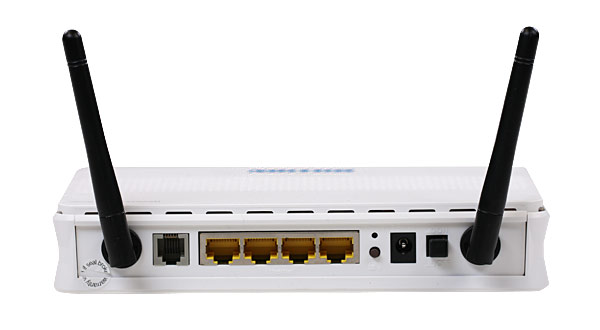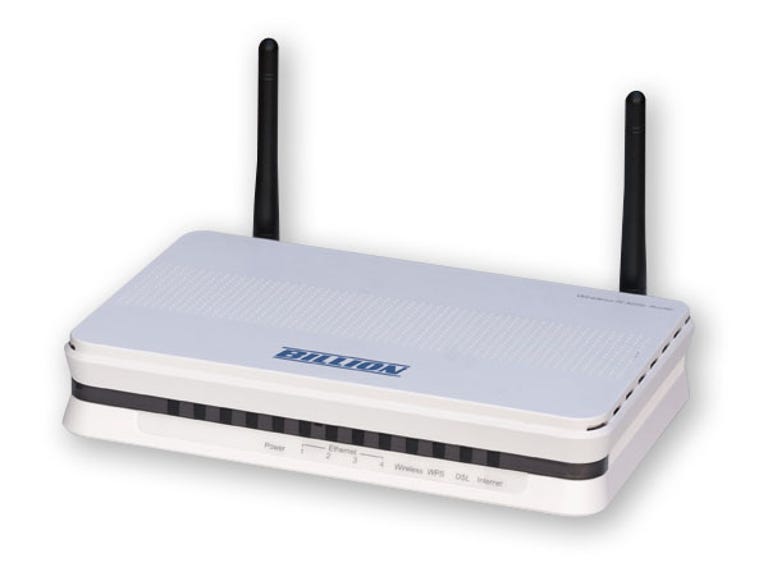 Why You Can Trust CNET
Why You Can Trust CNET Billion BiPAC 5200N RC review: Billion BiPAC 5200N RC
The Billion BiPAC 5200N RC is meant to be Billion's entry-level offering, but given you can find the upscale 7800N on the street for around the same price, it has a tough time proving its worth.
The BiPAC 5200N RC is an entry-level offering from Billion, sporting its newer white "boxy" chassis.
The Good
The Bad
The Bottom Line
With two external antennas, an ADSL2+ modem built-in that features Annex M support, and four 100Mb Ethernet ports, on paper it's essentially a cut down version of the 7800NL, which in itself is a cut-down version of Billion's flagship product, the 7800N.
Specs at a glance
| Firmware tested | 2.11.100.0(QRE0.C3)3.12.3.10 |
|---|---|
| ADSL2+ modem | Yes |
| Annex M | Yes |
| 3G modem | No |
| Wireless protocols | 802.11b/g/n |
| Highest wireless security | WPA2 |
| WDS | No |
| Ethernet ports | 4x 100Mbit |
| USB print sharing/storage | No |
| Accessories | Ethernet cable, phone cable, PCRange line filter, CD containing quick-start guide and manual |
Connections

ADSL line, four 100Mb Ethernet ports, reset and WPS buttons, power jack and button. (Credit: Alexandra Savvides/CBS Interactive)
UI and features
We found the user interface (UI) easy enough to navigate on the 5200N RC, and indeed less intimidating than the mass of options offered on the 7800N.
While most of the options were part and parcel for what you'd find in any router these days, including dynamic DNS services, QoS settings, WPS, URL/port filtering and a built-in firewall, one of the more interesting features is the ability to turn off DHCP on specific Ethernet ports — perhaps an alternative to keeping a DHCP reservation list.
The 5200N RC UI is simpler to navigate than Billion's 7800N. Its quick set-up wizard is reasonable too. As usual though to get the most out of your router you'll need to do a bit of reading — there's nothing in the interface that explains what each option does. (Screenshot by CBS Interactive)
Performance
After analysing the spectrum with InSSIDer, an empty channel of either 1, 6 or 11 is chosen for 2.4GHz wireless testing. The router is restricted to the 20MHz band and will only allow 802.11n clients. If possible, the MCS is set to 15.
We use iperf to determine throughput, running eight streams, with a TCP window size of 1MB, and an interval of one second. The test is run for five minutes in three different locations, on two separate occasions. The locations are in the same room as the router, one floor down around spiral stairs and with concrete walls and floors, and two floors down under the same conditions.
The wireless throughput is tested using three chipsets, the Atheros AR5008X, RaLink RT2870 and Intel 5100AGN, then all results are averaged.
(Longer bars indicate better performance)
Not so good here, but this is due to the 5200N RC really not liking our Ralink RT2870. If you take it out of the equation, its average throughputs for the first two locations are much higher: 58.5Mbps and 51.4Mbps respectively. Interestingly, at a distance the Ralink radio provided the best performance — if it's removed from the equation our average would only be 18.45Mbps at the third location.
ADSL performance is simply measured by the sync speed on an Internode ADSL2+ connection to the St Leonards exchange, on Internode's very high speed profile. If the connection remains stable over a period of time, the sync speed is recorded.
(Longer bars indicate better performance)
While it recorded the slowest uplink we've seen so far, it's not by much. Probably more important to some is the fact that the 5200N RC also managed to post our highest downlink score so far.
Power consumption
We measured power consumption using a Jaycar mains digital power meter. It's important to note here that due to limitations of the meter, measurements are limited to values 1W and greater, and are reported in 1W increments.
The wireless radio was turned on, and an iperf test begun for measurement, using one wireless client and one wired.
| Juice Box |  |
|---|---|
| Transmitting | 9W |
| Idle | 7W |
Interestingly, it pulls the same power as the BiPAC 7800N, although we'd hazard a guess it's using a different chipset due to its odd Ralink performance.
Warranty
A 24-month warranty is offered on all Billion products, and is covered by PCRange, Billion's distributor in Australia.
Conclusion
The 5200N RC is built to a price point. It has a friendlier UI than Billion modems are usually saddled with; however, with its current firmware, it has some trouble talking to Ralink radios, an issue which may expand to other chipsets. It's certainly a decent modem/router, but if you have a look around you'll find some places selling the higher-level 7800N for almost the same price. Since this gives you gigabit Ethernet, an extra WAN port and better wireless performance, we'd suggest it's the better bet.



